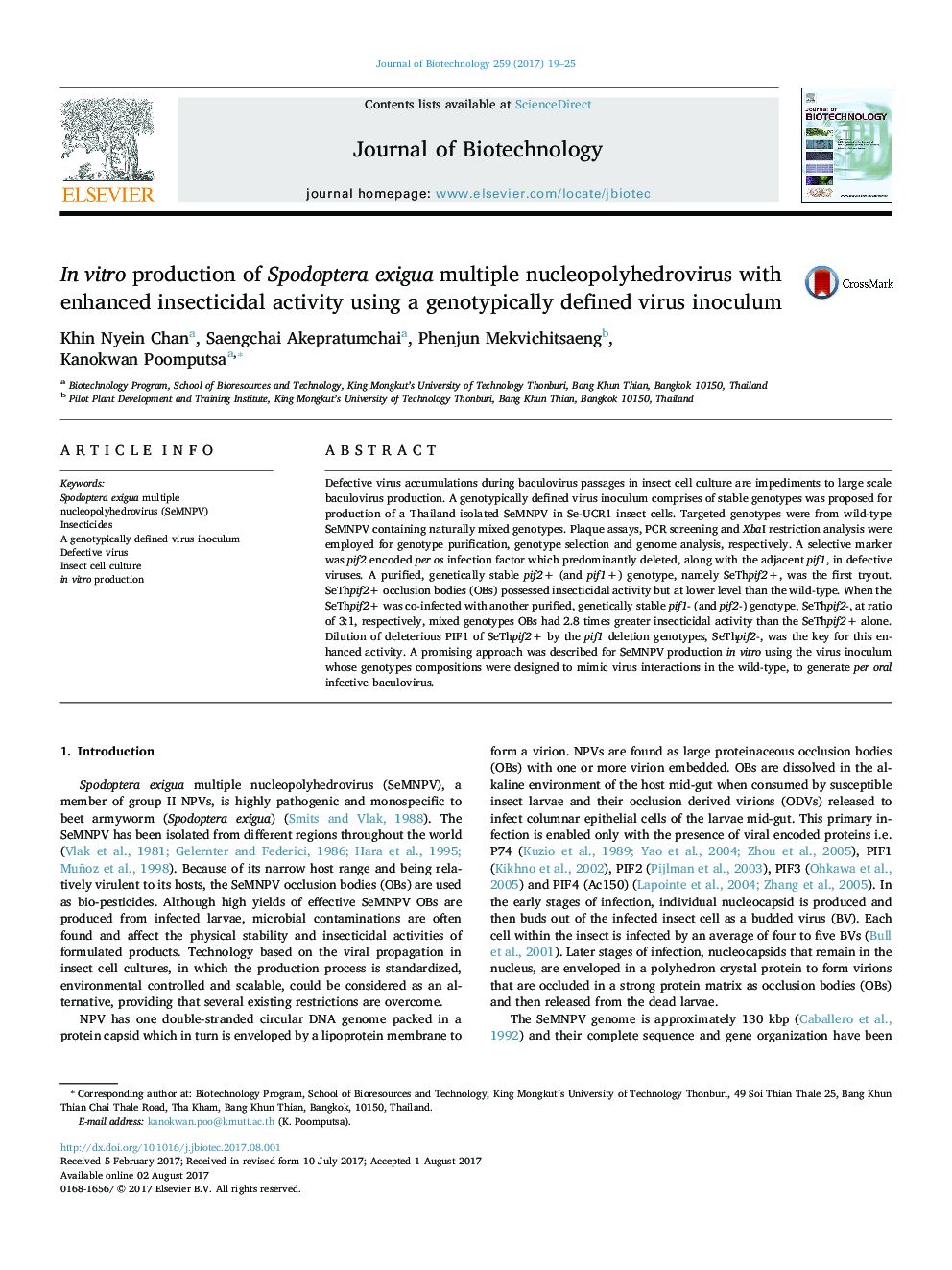| Article ID | Journal | Published Year | Pages | File Type |
|---|---|---|---|---|
| 6451982 | Journal of Biotechnology | 2017 | 7 Pages |
â¢A new approach for an in vitro production of SeMNPV baculovirus using a genotypically defined and genetically stable virus inoculum is described.â¢Sequential plaque purifications, rapid PCR and XbaI restriction endonuclease analysis were employed for genotype selection and identification.â¢Genotype combinations were designed to mimic the wild-type viruses to effectively produce per oral active SeMNPV occlusion bodies.â¢Enhanced insecticidal activity of the SeMNPV occlusion bodies could be made possible from cultured insect cells with specific designed SeMNPV.
Defective virus accumulations during baculovirus passages in insect cell culture are impediments to large scale baculovirus production. A genotypically defined virus inoculum comprises of stable genotypes was proposed for production of a Thailand isolated SeMNPV in Se-UCR1 insect cells. Targeted genotypes were from wild-type SeMNPV containing naturally mixed genotypes. Plaque assays, PCR screening and XbaI restriction analysis were employed for genotype purification, genotype selection and genome analysis, respectively. A selective marker was pif2 encoded per os infection factor which predominantly deleted, along with the adjacent pif1, in defective viruses. A purified, genetically stable pif2+ (and pif1+) genotype, namely SeThpif2+, was the first tryout. SeThpif2+ occlusion bodies (OBs) possessed insecticidal activity but at lower level than the wild-type. When the SeThpif2+ was co-infected with another purified, genetically stable pif1- (and pif2-) genotype, SeThpif2-, at ratio of 3:1, respectively, mixed genotypes OBs had 2.8 times greater insecticidal activity than the SeThpif2+ alone. Dilution of deleterious PIF1 of SeThpif2+ by the pif1 deletion genotypes, SeThpif2-, was the key for this enhanced activity. A promising approach was described for SeMNPV production in vitro using the virus inoculum whose genotypes compositions were designed to mimic virus interactions in the wild-type, to generate per oral infective baculovirus.
